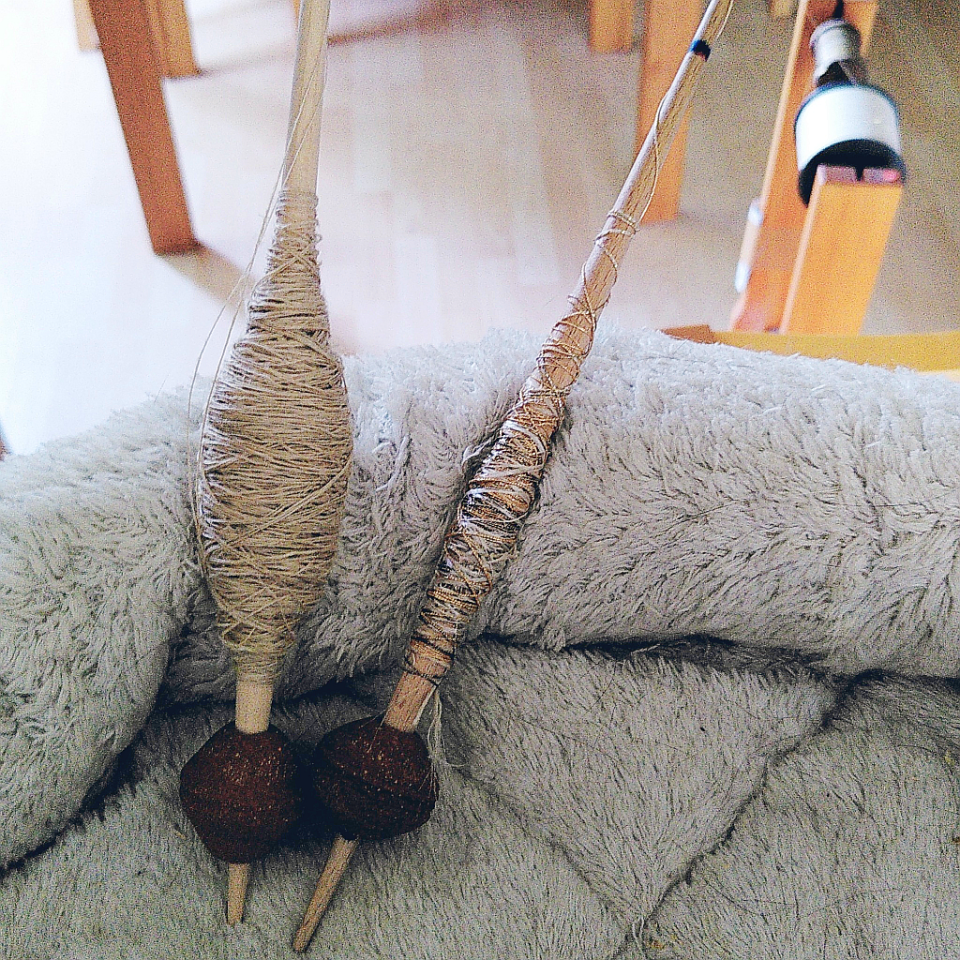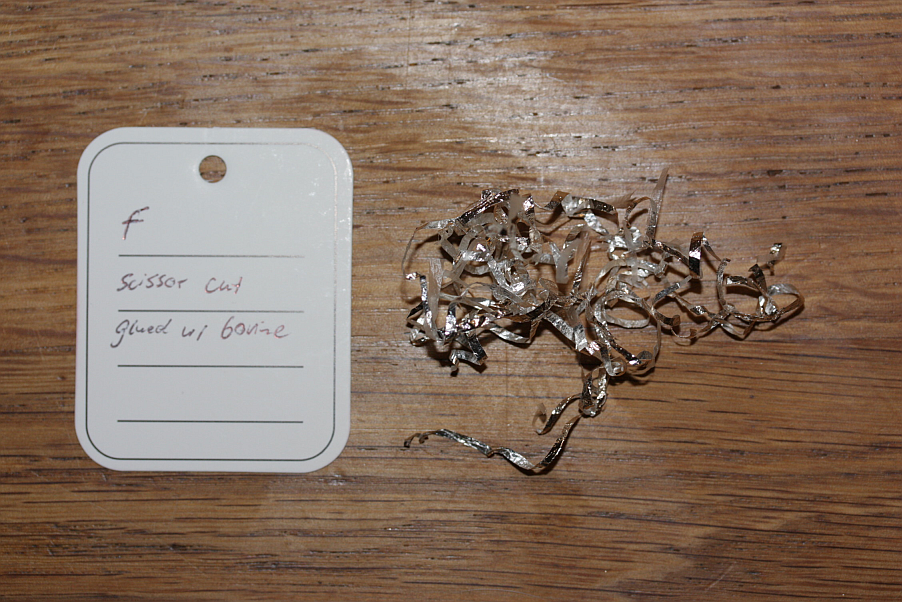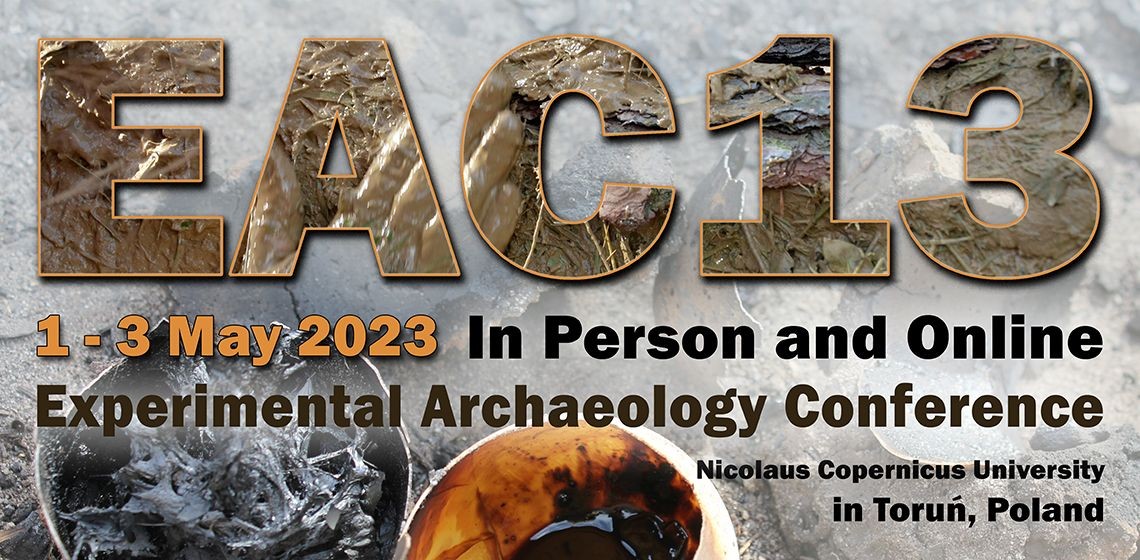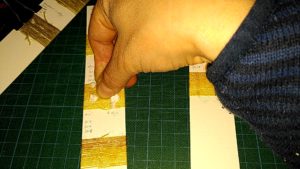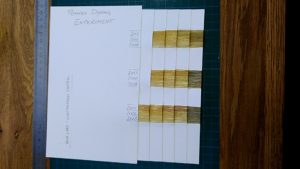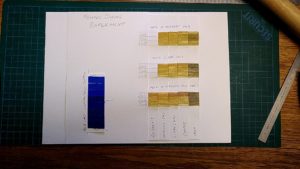If you're following me on Instagram, you may have seen some pictures of this on-going project already. It is, so to say, a left-over from last year's European Textile Forum, where we tried to explore the making of membrane gold threads.
Membrane gold threads are the cheaper version of real gold threads - it's a gilt animal membrane wrapped around a fibrous core. In our case, we built on the analysis results of some Italian threads that Cristina Scibé is researching.
There's a lot of unknowns or insecure things in the reconstruction of the process, and we were (and mostly still are) unfamiliar with most of the materials involved, so there was a really steep learning curve and there were plenty of "d'oh" moments.
But we have arrived at a process that is working, and that would be plausible also for production.
The photo shows the two spindles I am working with for wrapping strips of stuff around the core - one with the two linen single yarns, and the other with the wrapped yarns. These are not membrane strips, but modern metal and metallised plastic strips, done for practise purposes, as the membrane is a little too much work and too much of a resource to use as training material.
It's an utterly fascinating project... and I will give a little presentation about it on the EAA in Belfast this year. I'm already very excited about that!




